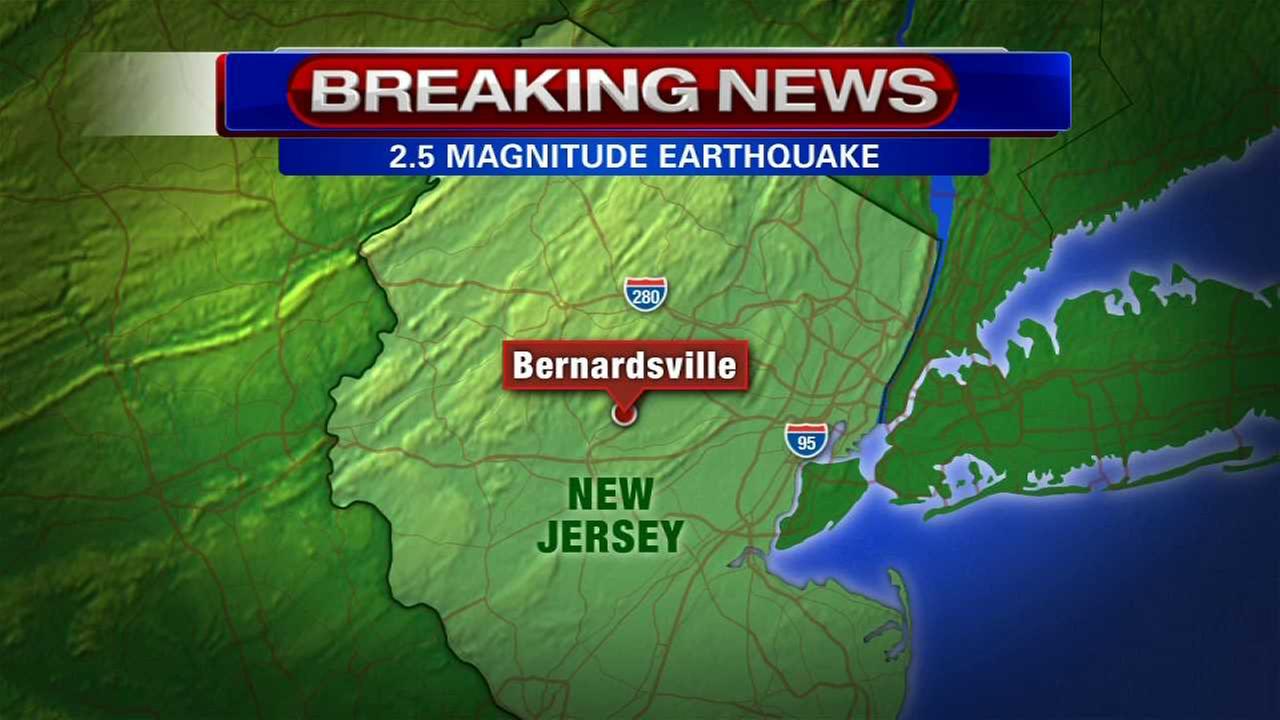 Earthquake Risk in New Jersey
Earthquake Risk in New Jersey
by Daniel R. Dombroski, Jr.
by Daniel R. Dombroski, Jr.
A 10–fold increase in amplitude represents about a
32–fold increase in energy released for the same duration of shaking.
The best known magnitude scale is one designed by C.F. Richter in 1935
for
west coast earthquakes.
west coast earthquakes.
An earthquake’s intensity is determined by observing
its effects at a particular place on the Earth’s surface. Intensity
depends on the earthquake’s magnitude, the distance from the epicenter,
and local geology. These scales are based on reports of people
awakening, felt movements, sounds, and visible effects on structures and
landscapes. The most commonly used scale in the United States is the Modified Mercalli Intensity Scale, and its values are usually reported in Roman numerals to distinguish them from magnitudes.
Past damage in New Jersey
New Jersey doesn’t get many earthquakes, but it does
get some. Fortunately most are small. A few New Jersey earthquakes, as
well as a few originating outside the state, have produced enough damage
to warrant the concern of planners and emergency managers.
Damage in New Jersey from earthquakes has been minor:
items knocked off shelves, cracked plaster and masonry, and fallen
chimneys. Perhaps because no one was standing under a chimney when it
fell, there are no recorded earthquake–related deaths in New Jersey. We will probably not be so fortunate in the future.

Area Affected by Eastern Earthquakes
Although the United States east of the Rocky
Mountains has fewer and generally smaller earthquakes than the West, at
least two factors increase the earthquake risk in New Jersey and the
East. Due to geologic differences, eastern earthquakes effect areas ten times larger than western ones of the same magnitude. Also, the eastern United States is more densely populated, and New Jersey is the most densely populated state in the nation.

Geologic Faults and Earthquakes in New Jersey
Although there are many faults in New Jersey, the Ramapo Fault, which separates the Piedmont and Highlands Physiographic Provinces, is the best known.
In 1884 it was blamed for a damaging New York City earthquake simply
because it was the only large fault mapped at the time. Subsequent
investigations have shown the 1884 earthquake epicenter was actually
located in Brooklyn, New York, at least 25 miles from the Ramapo Fault.
However, numerous minor earthquakes have been recorded in the Ramapo Fault Zone, a 10 to 20 mile wide area lying adjacent to, and west of, the actual fault.
More recently, in the 1970’s and early 1980’s,
earthquake risk along the Ramapo Fault received attention because of its
proximity to the Indian Point, New York, Nuclear Power Generating
Station. East of the Rocky Mountains (including New Jersey), earthquakes
do not break the ground surface. Their focuses lie at least a few miles
below the Earth’s surface, and their locations are determined by
interpreting seismographic records. Geologic fault lines seen on the
surface today are evidence of ancient events. The presence or absence of
mapped faults (fault lines) does not denote either a seismic hazard or
the lack of one, and earthquakes can occur anywhere in New Jersey.
Frequency of Damaging Earthquakes in New Jersey
Records for the New York City area, which have been kept for 300 years, provide good information
for estimating the frequency of earthquakes in New Jersey.
for estimating the frequency of earthquakes in New Jersey.
Earthquakes with a maximum intensity of VII (see table DamagingEarthquakes Felt in New Jersey
)have occurred in the New York City area in 1737, 1783, and 1884. One
intensity VI, four intensity V’s, and at least three intensity III
shocks have also occurred in the New York area over the last 300 years.
Buildings and Earthquakes
The 1995 earthquake in Kobe, Japan, is an example of what might happen in New Jersey in a similar quake.
It registered a magnitude 7.2 on the Richter scale and produced
widespread destruction. But it was the age of construction, soil and
foundation condition, proximity to the fault, and type of structure that
were the major determining factors in the performance of each building.
Newer structures, built to the latest construction standards, appeared
to perform relatively well, generally ensuring the life safety of
occupants.
New Jersey’s building code has some provisions for earthquake–resistant design. But
there are no requirements for retrofitting existing buildings — not
even for unreinforced masonry structures that are most vulnerable to
earthquake damage. Housing of this type is common in New Jersey’s
crowded urban areas. If an earthquake the size of New York City’s 1884
quake (magnitude 5.5) were to occur today, severe damage would result.
Fatalities would be likely.
Structures have collapsed in New Jersey without
earthquakes; an earthquake would trigger many more. Building and housing
codes need to be updated and strictly enforced to properly prepare for
inevitable future earthquakes.
No comments:
Post a Comment